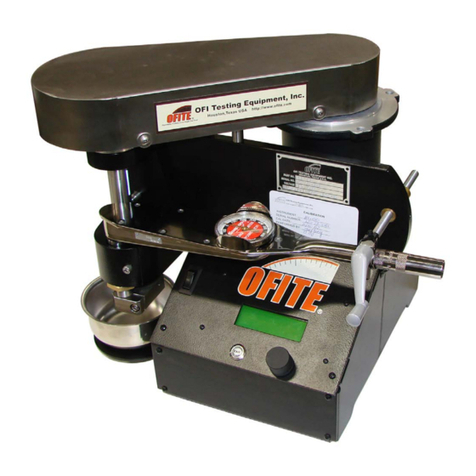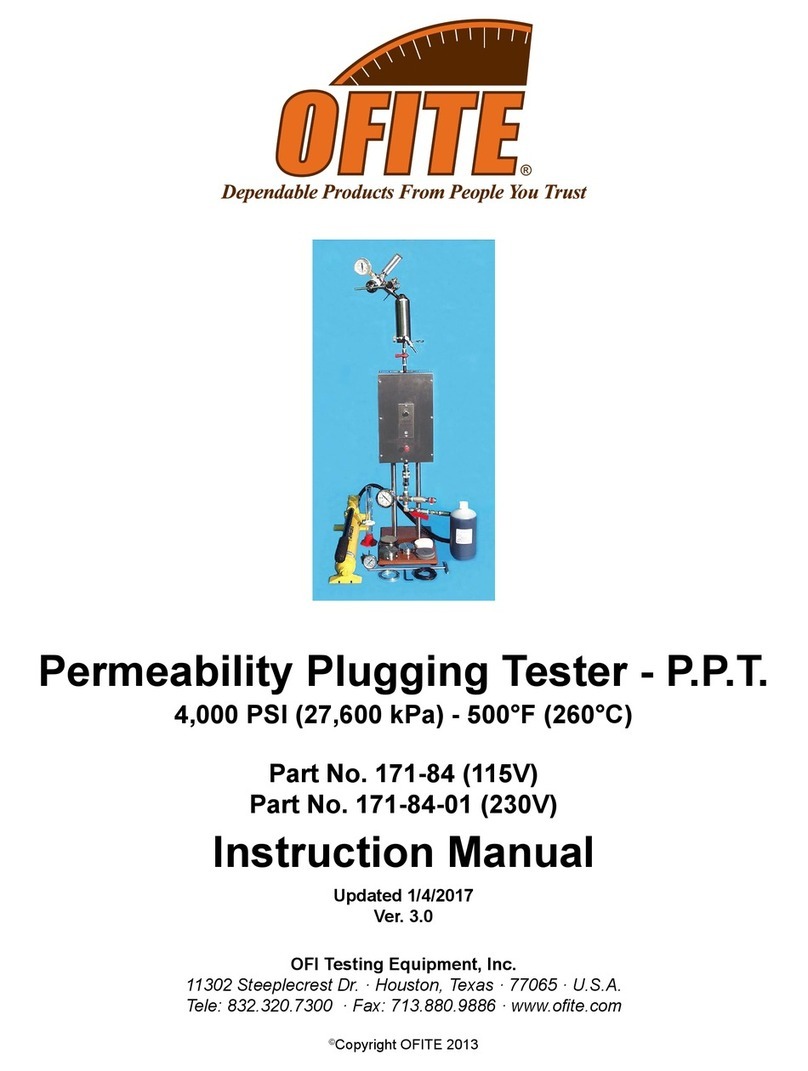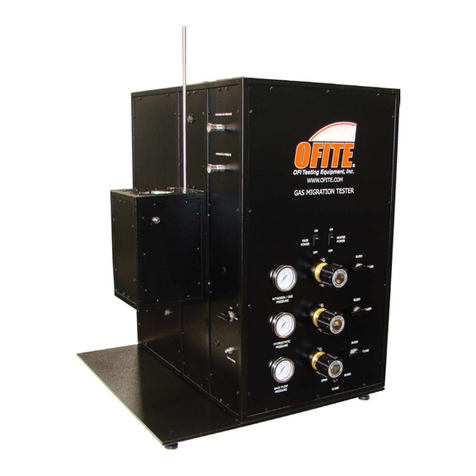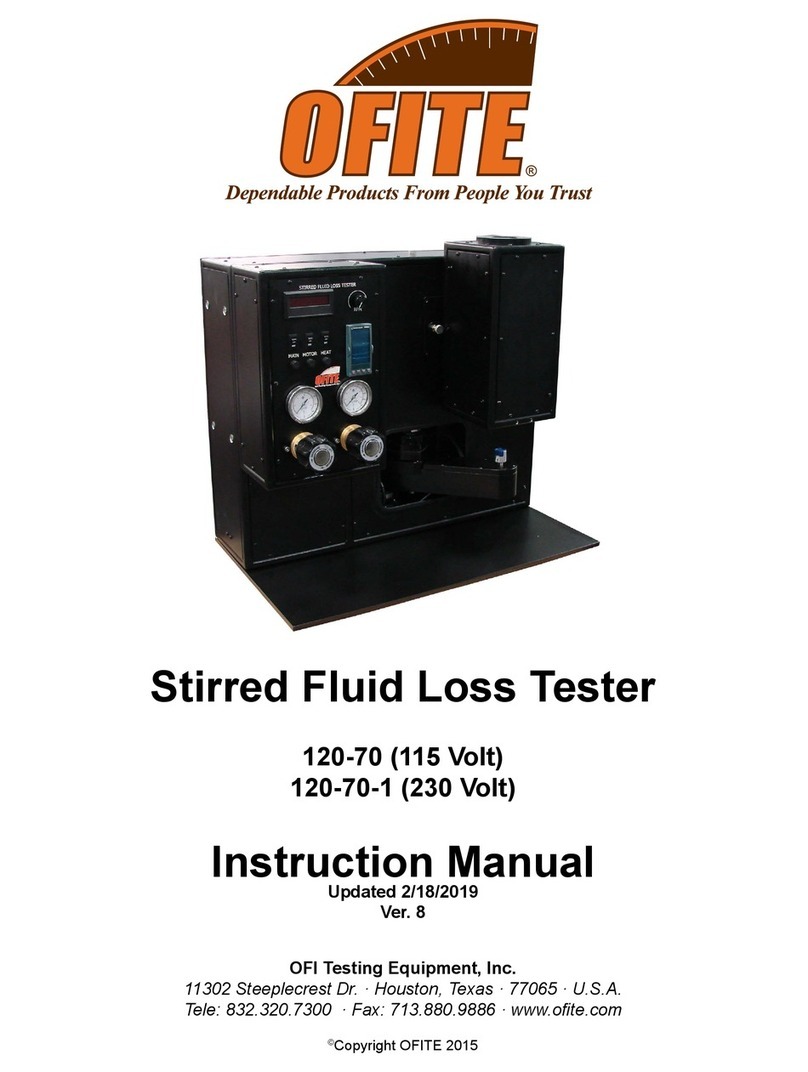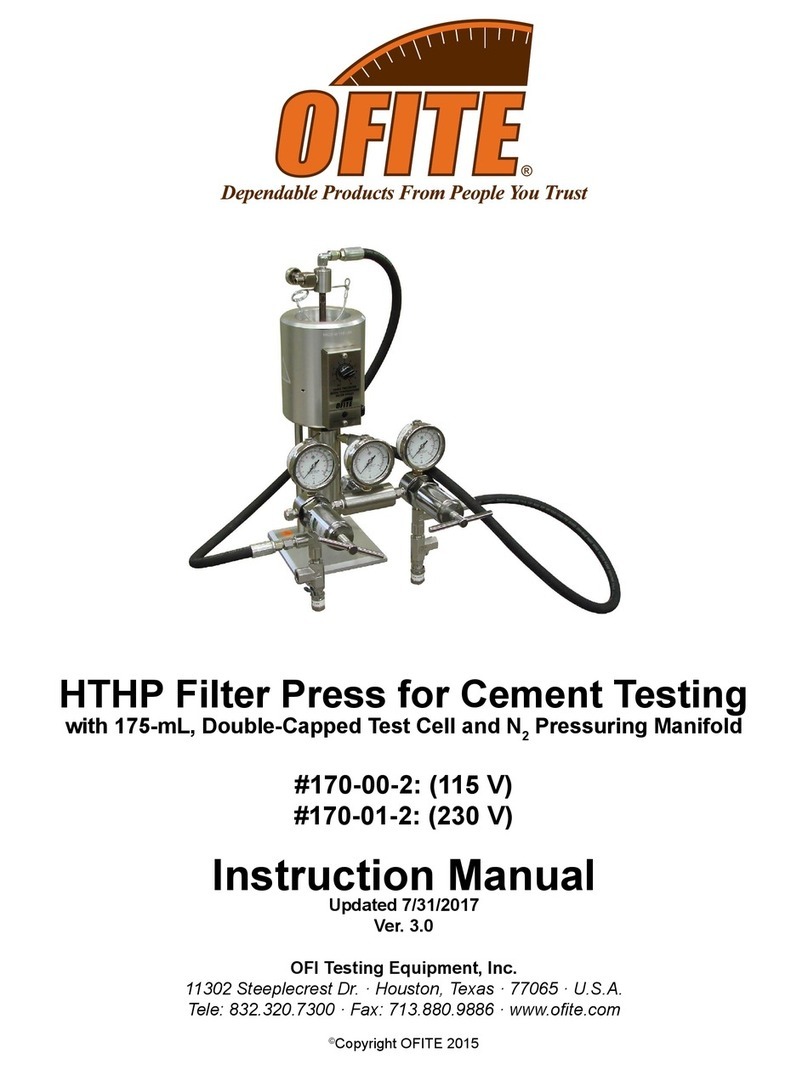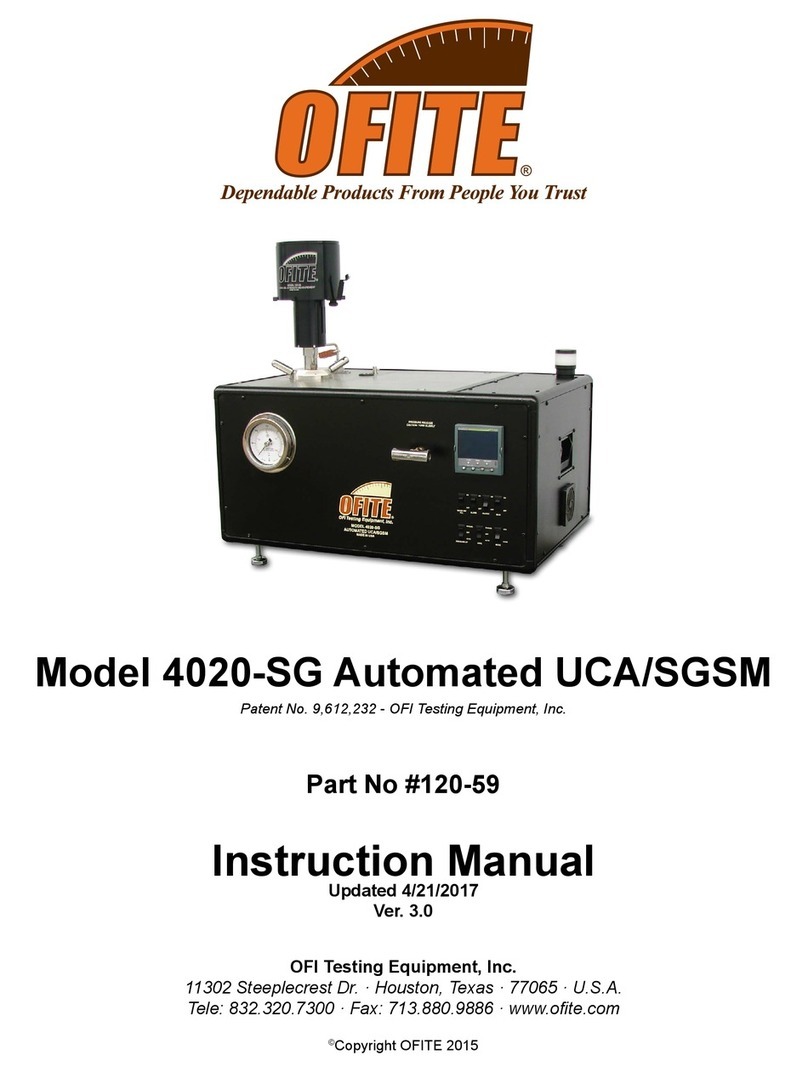
OFITE, 11302 Steeplecrest Dr., Houston, TX 77065 USA / Tel: 832-320-7300 / Fax: 713-880-9886 / www.ote.com 5
#120-01 Spare Parts for Model 100:
#120-00-1 Consistometer Tool Kit
#120-001 Mineral Oil, 2 Gallons
#120-102 Rupture Disk (28,000 PSI), Qty: 2
#120-202 4,000-Watt Heater
#120-204 Heater Gasket, Qty: 2
#120-208 Slurry Cup Thermocouple, Qty: 2
#120-401 Metal O-ring, Qty: 6
#120-501 Slurry Cup Sleeve
#120-502 Molded Diaphragm, Qty: 25
#120-503 Paddle Pin, Qty: 12
#120-504 Pivot Bearing, Qty: 6
#120-505 Pivot Bearing Gasket, Qty: 5
#120-506 Paddle for Slurry Cup Assembly, Qty: 4
#120-507 Paddle Shaft for Slurry Cup Assembly, 7.75" Long, Qty: 10
#120-508 Diaphragm Retaining Ring, Qty: 2
#120-509 Drive Disk for Slurry Cup Assembly
#120-510 Drive Bar for Slurry Cup Assembly
#120-511 Slurry Cup Shear Pin, Qty: 24
#120-512 Slurry Cup Drive Pin, Qty: 12
#120-513 Slurry Cup Gasket, Qty: 6
#120-514 Drive Disk Set Screw, 6-32 × 3, Stainless Steel, Qty: 10
#120-519 Slurry Cup Assembly, No Expansion Cap
#120-602 Calibration Spring, Qty: 3
#120-604 Potentiometer Resistor, Qty: 4
#120-606 Potentiometer Contact Arm, Qty: 6
#120-607 Contact Strip, Qty: 6
#120-608 Grounding Cable Retaining Screw, 10-32 × ½SHCS SS
#120-684 Large Bronze Bearing, Qty: 2
#122-072 1-Amp Fuse, 5 mm × 20 mm, Qty: 5
#122-073 2-AMP Fuse, 5 mm × 20 mm, Qty: 5
#130-75-28 " Allen Key, 1.75" Long, Qty: 2
#120-11 Spare Parts for Model 120:
#120-001 Mineral Oil, 2 Gallons
#120-10-1 Consistometer Tool Kit
#120-103 Rupture Disk, 45,000 – 50,000 PSI, Prebulged, Qty: 2
#120-202 4,000 Watt Heater
#120-203 Slurry Cup Thermocouple, Qty: 2
#120-204 Heater Gaskets, Qty: 2
#120-401 Metal O-rings, Qty: 10
#120-501 Slurry Cup Sleeve
#120-502 Molded Diaphragm, Qty: 25
#120-503 Paddle Pin, Qty: 12
#120-504 Pivot Bearing, Qty: 6
#120-505 Pivot Bearing Gasket, Qty: 5
#120-506 Paddle for Slurry Cup Assembly, Qty: 4
#120-508 Diaphragm Retaining Ring for Slurry Cup Assembly, Qty: 2
#120-509 Drive Disc for Slurry Cup Assembly












